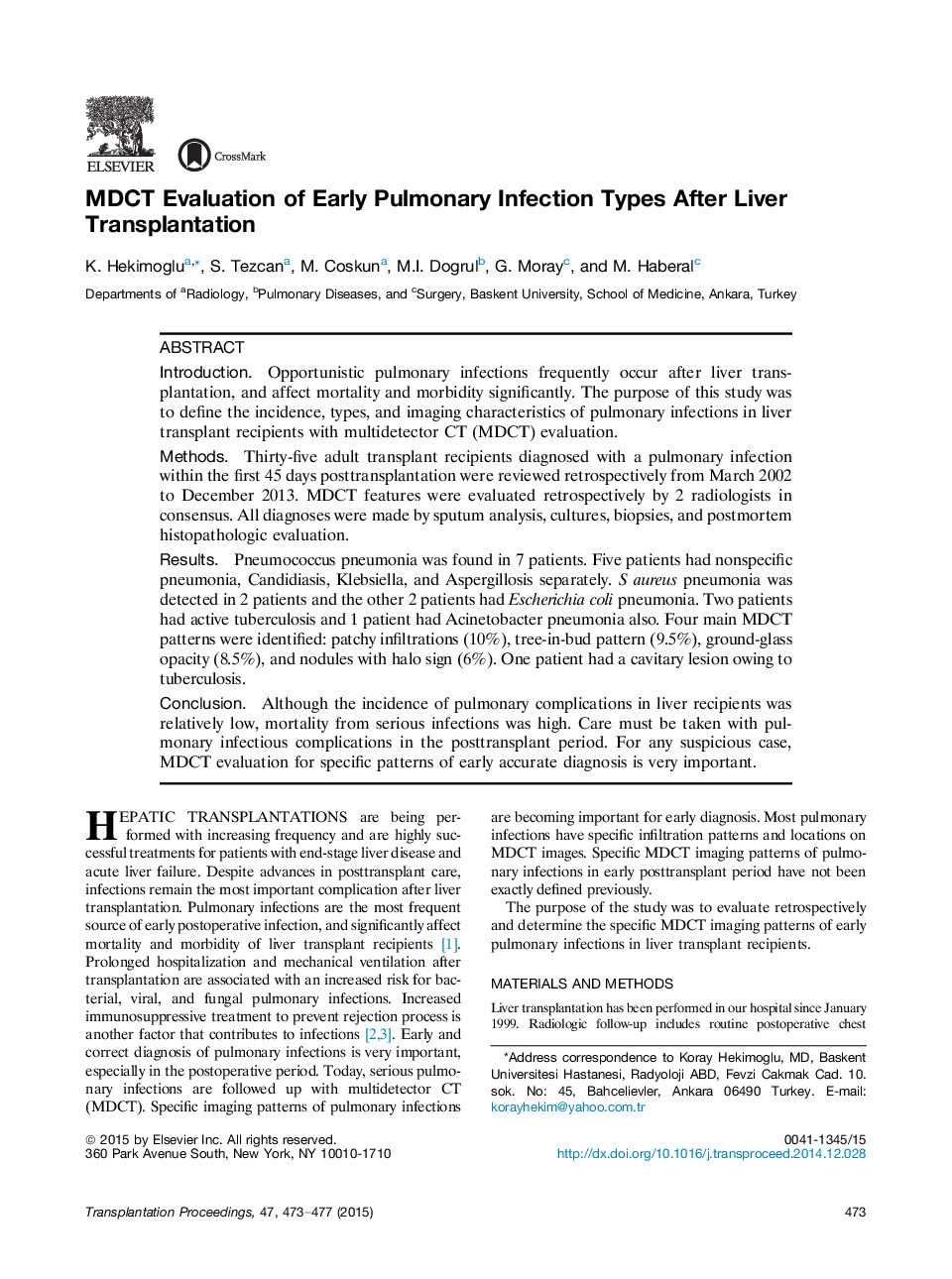| Article ID | Journal | Published Year | Pages | File Type |
|---|---|---|---|---|
| 4257630 | Transplantation Proceedings | 2015 | 5 Pages |
•Pulmonary infections are very important complications in liver transplant recipients.•Every pulmonary infection has a specific pattern.•MDCT should be performed for diagnosis and follow-up of pulmonary infections.
IntroductionOpportunistic pulmonary infections frequently occur after liver transplantation, and affect mortality and morbidity significantly. The purpose of this study was to define the incidence, types, and imaging characteristics of pulmonary infections in liver transplant recipients with multidetector CT (MDCT) evaluation.MethodsThirty-five adult transplant recipients diagnosed with a pulmonary infection within the first 45 days posttransplantation were reviewed retrospectively from March 2002 to December 2013. MDCT features were evaluated retrospectively by 2 radiologists in consensus. All diagnoses were made by sputum analysis, cultures, biopsies, and postmortem histopathologic evaluation.ResultsPneumococcus pneumonia was found in 7 patients. Five patients had nonspecific pneumonia, Candidiasis, Klebsiella, and Aspergillosis separately. S aureus pneumonia was detected in 2 patients and the other 2 patients had Escherichia coli pneumonia. Two patients had active tuberculosis and 1 patient had Acinetobacter pneumonia also. Four main MDCT patterns were identified: patchy infiltrations (10%), tree-in-bud pattern (9.5%), ground-glass opacity (8.5%), and nodules with halo sign (6%). One patient had a cavitary lesion owing to tuberculosis.ConclusionAlthough the incidence of pulmonary complications in liver recipients was relatively low, mortality from serious infections was high. Care must be taken with pulmonary infectious complications in the posttransplant period. For any suspicious case, MDCT evaluation for specific patterns of early accurate diagnosis is very important.
